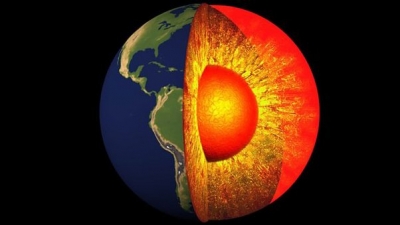
What is the furthest down humans have gone? What is the Kola superdeep Borehole? Read on to find the answers.
In Jules Verne’s science fiction novel, Journey to the Centre of the Earth (1864), three men reach the centre of the Earth. Is this ever possible? Our planet is made up of three main layers- the crust, the mantle and the core. The continents and oceans are situated on the crust which is about 8 km thick under the oceans and between 35 and 40 km deep under the continents. Below the crust is the mantle which is about 2,900 km thick. Next comes the core. The outer core, about 2.250 km thick, is made up of melted iron and nickel, and contained within it, is a ball-shaped inner core believed to be made up of solid iron and nickel.
The centre of the innermost core is the centre of the Earth. So there are thousands of kilometres to descend to reach the centre of the Earth, and what is the furthest down we’ve gone? When the Russians and the Americans were engaged in a race to the moon several decades ago, they also embarked on a race to inner space to see how far down they could go. While the Americans did not make much headway in this race downwards (Project Mohole’), the Russians went at it, hammer and tongs, in the Kola Peninsula and dug a hole 12.262 km deep over a period of 24 years from 1965 to 1989. They wanted to go at least 15 km down, but just could not. This is the closest we’ve been able to go to the centre of the Earth. The Kola Superdeep Borehole, as it is now called, attracts curious visitors from around the world.
Picture Credit : Google



